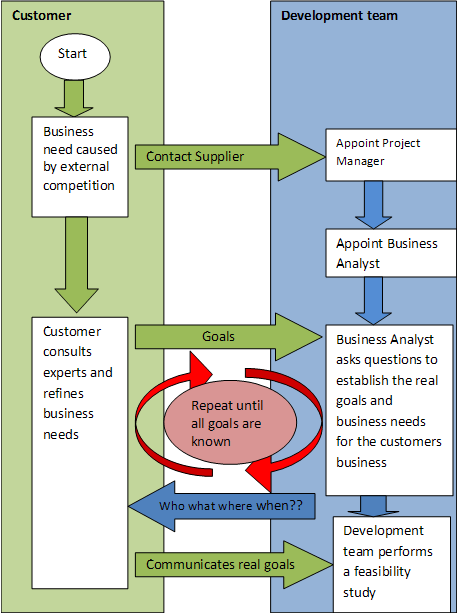The Roles of the Development Team EE
The Roles of the Development Team
It is important that each member of the Project Team understands the role that they perform. The work must be allocated to the appropriate person for the best possible results. Where it is not clear whose role a task is then often the task is left unperformed or performed twice. Clear and concise job descriptions are required for each member of the project development team, so that from the outset each team member knows:
- The part of the process that they are responsible for
- Who performs the next stage of the process
- The limits of their own responsibility
- How to escalate problems when they occur
The Project or Product manager
The Project or Product manager is appointed at the start of the process and is responsible for:
- Controlling the overall project or product including the budget and deadlines
- Defining whether the project is financially viable
- The successful:
- Planning of a project or product
- Execution of a project or product
- Monitoring of a project or product
- Closure of a project or product
The Project or Product manager is also responsible for setting the requirements for tasking the:
- Business Analysts via the BA Pool
- Solution Architects dedicated to the project
- Developers via the development pool
- Technical writers via the Group leader
The Project or Product manager appoints members of the Project Team Business Analysts and acts as a member.
The Business (or System) Analyst:
- Gathers the Goals from the Sponsor
- Records the Goals from the Sponsor with unique identifications
- Translates those Goals into Requirements with the help of Experts
- Asks further questions to help the Sponsor discover and understand all the details of the project
- Communicates with the Product or Project manager
- Acts as a member of a team
- Must not specify how the goals are realised
Note: If the Business analyst specifies how the goals are realised then often it damages the development. In smaller organisations where roles are combined the processes must be done separately so that no goals are lost.

The System Architect
Is responsible for defining:
- The technical feasibility of the project
- The Requirements (what is needed)
- The Functional Specifications (what will be realized)
- The Design (how the system will be realized)
- How the system will be tested and verified
The Project (Development) Team
The Team of Experts for a project includes the following:
- Business (System) Analysts
- Product or Project Managers
- Assistants to the above
- Solution (System) Architects
- Developers
The Project Team will also seek advice from Accountants and Legal Staff. The team is responsible for translating the goals into requirements with unique numbering and matching those requirements to uniquely numbered Functions and uniquely numbered Structures.
The next module is Writing Requirements Discovering Customer goals (EE)
- Back to Technical Writing Level 1